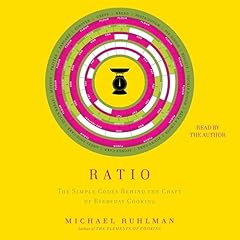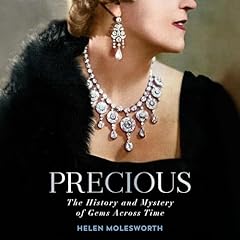
Silk
A World History
No se pudo agregar al carrito
Add to Cart failed.
Error al Agregar a Lista de Deseos.
Error al eliminar de la lista de deseos.
Error al añadir a tu biblioteca
Error al seguir el podcast
Error al dejar de seguir el podcast
Obtén 3 meses por US$0.99 al mes
 Exclusivo para miembros Prime: ¿Nuevo en Audible? Obtén 2 audiolibros gratis con tu prueba.
Exclusivo para miembros Prime: ¿Nuevo en Audible? Obtén 2 audiolibros gratis con tu prueba.
Compra ahora por $25.19
-
Narrado por:
-
Hannah Curtis
-
De:
-
Aarathi Prasad
A Smithsonian Magazine Best History Book of 2024
A Library Journal Selection for Best Nonfiction of 2024
A Next Big Idea Book Club Must-Read for April
“Aarathi Prasad’s Silk: A World History is a love song to this protean material. . . . Beautiful [and] fascinating.” —Wall Street Journal
""Aarathi Prasad spins a masterpiece of a story, as luminous, supple, and surprising as the wondrous threads themselves."" —Sy Montgomery, bestselling author of The Soul of an Octopus and Of Time and Turtles
Throughout history, across cultures and countries, silk has reigned as the undeniable queen of fabrics, yet its origins and evolution remain a mystery. In a gorgeous and sweeping narrative, Silk weaves together its intricate story and the indelible mark it has left on humanity.
Some four thousand years ago, the cultivation of silkworms began, the practice spreading to the far reaches of civilization. With it came a growing obsession with unlocking silk’s secrets to understand how the strongest biological material ever known could be harnessed.
Explorers and scientists, including groundbreaking women who pushed the boundaries of societal expectations, dedicated—even sacrificed—their lives to investigate the anatomy of silk-producing animals. They endured unbelievable hardships to discover and collect new specimens, leading them to the moths of China, Indonesia, and India; the spiders of Argentina, Paraguay, and Madagascar; and the mollusks of the Mediterranean.
Rich with the complex connections between human and nonhuman worlds, Silk not only peers into the past but also reveals the fiber’s impact today, inspiring new technologies across the fashion, military, and medical fields, and shows its untapped potential to pioneer a more sustainable future.
The culmination of author and biologist Aarathi Prasad’s own lifelong passion and grounded in years of research and writing, Silk is an intoxicating read that provides an essential illumination of nature’s most glamourous thread.
Los oyentes también disfrutaron:




















Las personas que vieron esto también vieron:














I never knew there were so many different types of silk. Fascinating!
Se ha producido un error. Vuelve a intentarlo dentro de unos minutos.
Disappointing
Se ha producido un error. Vuelve a intentarlo dentro de unos minutos.


